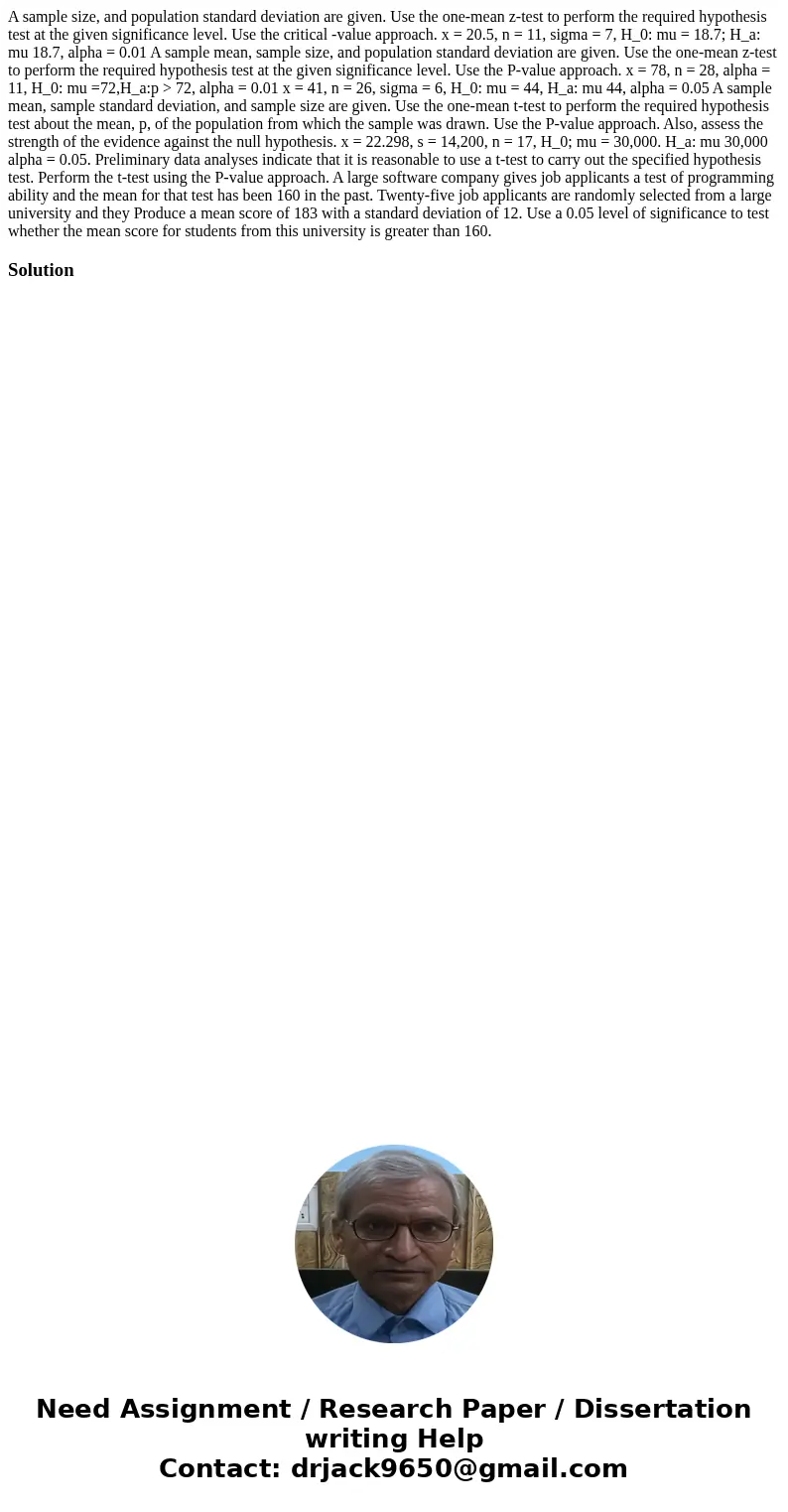A sample size and population standard deviation are given Us
A sample size, and population standard deviation are given. Use the one-mean z-test to perform the required hypothesis test at the given significance level. Use the critical -value approach. x = 20.5, n = 11, sigma = 7, H_0: mu = 18.7; H_a: mu 18.7, alpha = 0.01 A sample mean, sample size, and population standard deviation are given. Use the one-mean z-test to perform the required hypothesis test at the given significance level. Use the P-value approach. x = 78, n = 28, alpha = 11, H_0: mu =72,H_a:p > 72, alpha = 0.01 x = 41, n = 26, sigma = 6, H_0: mu = 44, H_a: mu 44, alpha = 0.05 A sample mean, sample standard deviation, and sample size are given. Use the one-mean t-test to perform the required hypothesis test about the mean, p, of the population from which the sample was drawn. Use the P-value approach. Also, assess the strength of the evidence against the null hypothesis. x = 22.298, s = 14,200, n = 17, H_0; mu = 30,000. H_a: mu 30,000 alpha = 0.05. Preliminary data analyses indicate that it is reasonable to use a t-test to carry out the specified hypothesis test. Perform the t-test using the P-value approach. A large software company gives job applicants a test of programming ability and the mean for that test has been 160 in the past. Twenty-five job applicants are randomly selected from a large university and they Produce a mean score of 183 with a standard deviation of 12. Use a 0.05 level of significance to test whether the mean score for students from this university is greater than 160.
Solution

 Homework Sourse
Homework Sourse